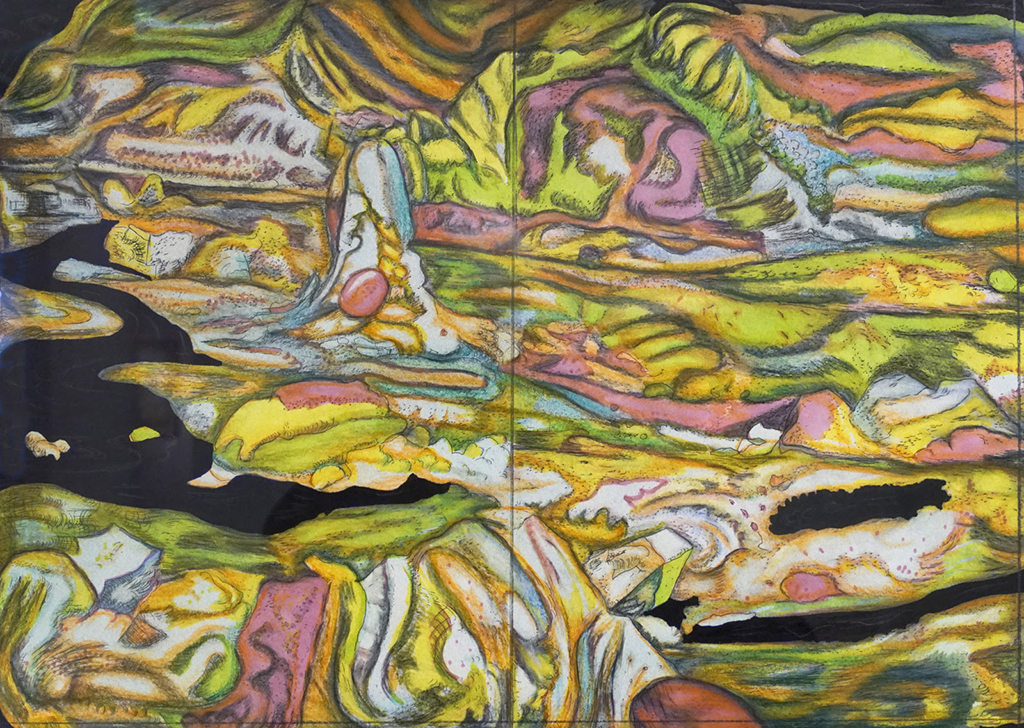
The emotive force of the Scottish landscape
This summer the Royal Scottish Academy will present an exhibition entitled Our Infinite Land.
Taking Hugh MacDiarmid’s decrial ‘Scotland small? Our multiform, our infinite Scotland small?’ as an initial cue, the exhibition will highlight the emotive power of the Scottish landscape and show the contrasting approaches taken by Royal Scottish Academicians toward the subject.
It will consider the web of implied narratives, political appropriations and cultural signifiers built into depictions of the environment in Scottish art as a result of the unerring pull of the landscape. 41 Royal Scottish Academicians will exhibit, including Leon Morrocco, Eileen Lawrence, Will Maclean, Joyce W. Cairns, Alexander Moffat and Adrian Wiszniewski.
Painting in Scotland has been associated with the landscape since the eighteenth century when artists began to see the mountains and glens of the Highlands as national monuments.
The tradition of landscape painting in Scotland gained popularity in the nineteenth century as William McTaggart and Joseph Farqhuarson represented the sublime grandeur of the land. In the early twentieth century, the Colourists took heed of the French impetus to paint on location, depicting the elements with bold, gestural marks.
Our Infinite Land shows the ways in which contemporary Scottish artists are both furthering and subverting this tradition. Henry Kondracki’s paintings employ deft impasto brushstrokes that speak to the Colourist tradition, but his work also emerges from a more complex process that relies on our modern, technological relationship with the land as his aerial scenes of untouched mountain ranges and verdant valleys are the product of his examination of drone footage.
Similarly, in Robbie Bushe’s suburban scenes drones swarm the skies over streets and gardens in Edinburgh.

Adrian Wiszniewski’s Dunure Beach,
The exhibition shows the ecological threat facing the Scottish landscape to be a significant theme in contemporary Scottish art. Ade Adesina’s Tic Toc is a portentous image signalling the urgent need to address humanity’s mishandling of the environment. Edward Summerton’s collaborative piece with composer Andrew Wasylyk comprises a portfolio box containing a unique vinyl record and four gouache paintings.
With Summerton’s typical sardonicism, the work presents a damning indictment of ecological crisis. In another exhibition highlight, Alan Robb’s Empty Beach with Tanker refers to the long-lasting legacy of oil production on the northeast coastline of Scotland.
The materiality of the land also emerges as a significant thread in the work of several exhibiting artists. Sam Ainsley’s Nuclear Landscape shows a semi-abstracted subterranean space with disorientating stalagmitic forms that grow into vertical shapes not dissimilar to trees.
Similarly, Michael Visocchi’s plywood, beech and resin construction, Triplicate, looks into the land, showing shapes entombed below the earth, archaeological sites kept secret underground. Glen Onwin’s Subterranean Breath considers the properties of the natural substances that compose the earth, looking to the life within the minerals buried deep below.
The exhibition will allow visitors to view works of Royal Scottish Academicians, all preeminent in their fields, addressing the subject of the Scottish landscape with a variety of approaches.
All works will be available for sale.
It will run from 22 June–21 July. Admission is free of charge at The Academicians’ Gallery and Finlay Room, Royal Scottish Academy, Princes Street, Edinburgh, EH2 2EL. For more details, visit the exhibition webpage HERE.
For further information about the RSA visit www.royalscottishacademy.org
TAGS

